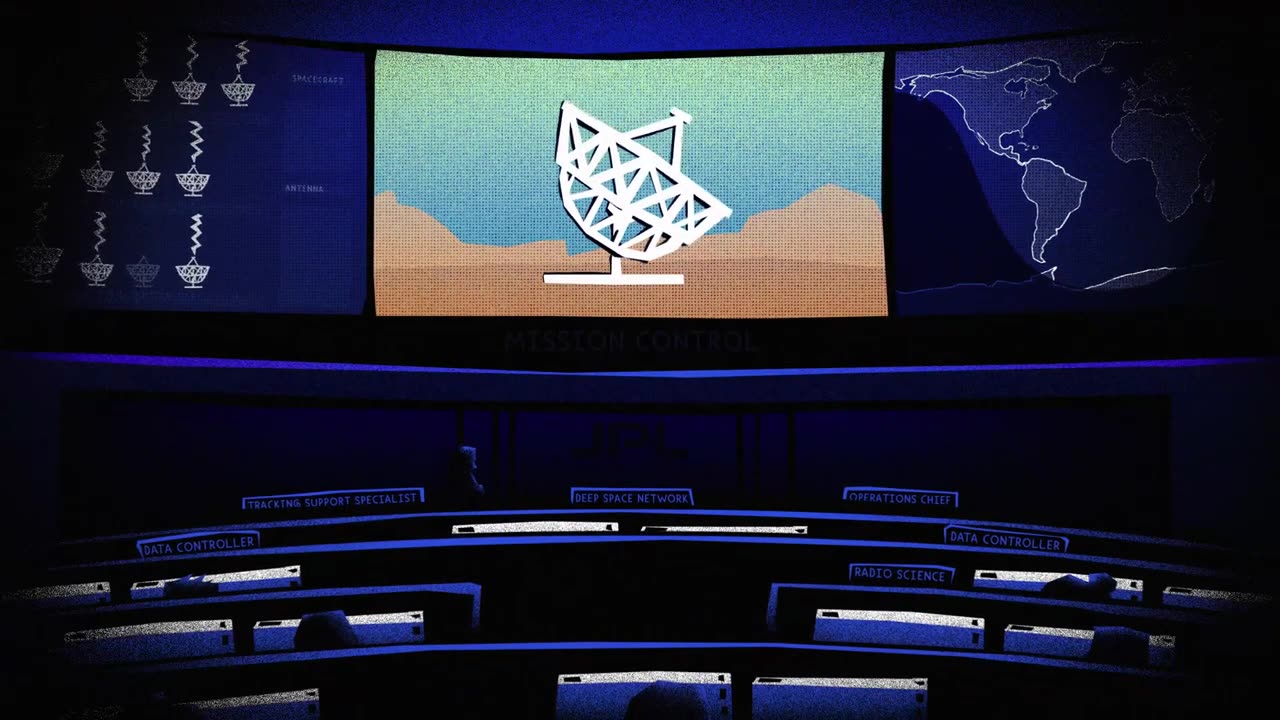Premium Only Content

How NASA Uses Gravity and Radio Waves to Study Planets and Moons
How NASA Uses Gravity and Radio Waves to Study Planets and Moons
The Deep Space Network, NASA' s international collection of giant radio antennas used to communicate with spacecraft at the Moon and beyond, helps scientists and engineers use gravity and radio science experiments to learn more about our planetary neighborhood.
After reaching a spacecraft reaches its destination, it uses radio antennas to communicate with the Deep Space Network, which in turn transmits radio signals back to the spacecraft. Every spacecraft travels in a predetermined path emitting radio signals as it orbits around its target. Scientists and engineers can infer the spacecraft's location and how fast it's going by measuring changes in the spacecraft's radio signal frequency. This is made possible by the Doppler effect, the same phenomenon that causes a siren to sound different as it travels towards and away from you.
The Doppler phenomenon is observed here when the spacecraft and the Deep Space Network antenna move in relation to each other. Differences between the frequency of radio signals sent by the spacecraft as it orbits and signals received on Earth give us details about the gravitational field of a planetary body. For example, if the gravity is slightly stronger, the spacecraft will accelerate slightly more.
-
 59:37
59:37
Trumpet Daily
20 hours ago $3.87 earnedTrump Turns Two Weeks Into Two Years’ Worth of Action - Trumpet Daily | Feb. 5, 2025
4.31K37 -
 54:17
54:17
PMG
11 hours ago"AJ Rice Unfiltered: The Left, the Woke Agenda, and the Death of Humor"
2.14K -
 1:43:11
1:43:11
Omar Elattar
1 month agoFrom Bank Robber To Millionaire: How I Became A $100M Sales Trainer
2.05K -
 2:42:28
2:42:28
FreshandFit
10 hours agoShe Dated Him For 2 YEARS Before Finding THIS OUT?!
105K110 -
 2:41:49
2:41:49
Laura Loomer
11 hours agoEP99: Trump Dumps USAID As Leftists Panic!
105K42 -
 22:50
22:50
DeVory Darkins
15 hours ago $18.48 earnedDemocrats UNLEASH IMPEACHMENT on Trump
61.3K231 -
 1:17:34
1:17:34
Mike Rowe
12 hours agoA Masterclass In The Collapse Of Woke Culture With Anson Frericks
65.1K39 -
 17:51
17:51
Stephen Gardner
12 hours ago🔥YES!! Trump CUTS CORD on Democrats SECRET PROGRAM!
90.5K73 -
 2:16:49
2:16:49
TheSaltyCracker
12 hours agoMusk Destroys Gov't Money Pot ReeEEeE Stream 02-05-25
166K278 -
 1:10:59
1:10:59
FreshandFit
12 hours agoTop 3 Ways To Overcome A Break Up
137K16